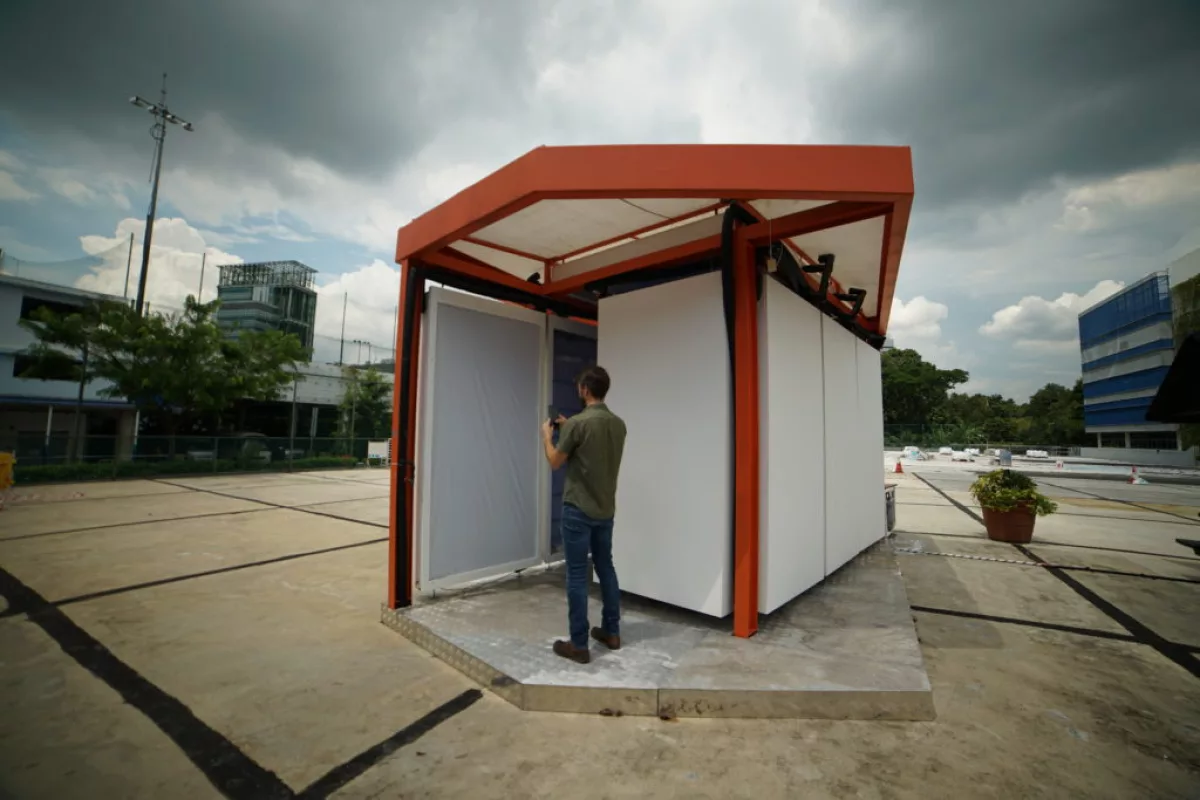Air conditioners are a convenient way to cool down offices and homes, but they use huge amounts of energy in the process. A team of scientists has been developing an alternative solution for those warm summer months called the Cold Tube, which works by absorbing body heat emitted from a person and can use around half the energy of traditional systems as a result.
The notoriously bad energy efficiency of air conditioners has motivated the development a range of environmentally friendly solutions, from attachments that use water mist to pre-cool the units to solar-powered systems that produce hot water at the same time. In 2018, Richard Branson even launched a US$3 million competition aimed at developing more energy efficient air conditioners.
Similarly, the research team behind the Cold Tube has been investigating next-generation systems that keep people cool in more efficient ways. Made up of scientists from the University of British Columbia, Princeton University, the University of California, Berkeley and the Singapore-ETH Centre, the team took aim at the dehumidification process that is a critical function of today’s air conditioning systems.
“Air conditioners work by cooling down and dehumidifying the air around us – an expensive and not particularly environmentally friendly proposition,” explains project co-lead Adam Rysanek, from the University of British Columbia. “The Cold Tube works by absorbing the heat directly emitted by radiation from a person without having to cool the air passing over their skin. This achieves a significant amount of energy savings.”

The system takes advantage of how heat is naturally drawn from hotter surfaces to colder surfaces via radiation, through an arrangement of rectangular wall or ceiling panels with chilled water running through them. These are wrapped in a novel membrane that is airtight and repels humidity to avoid the buildup of condensation like you might see on the outside of a cold can of soda on the warm day.
At the same time, this membrane allows radiation to pass through, which means that as a person stands next to or beneath the panel, the body heat radiates towards the chilled panels to create a cooling sensation, without the need to dehumidify the air. The Cold Tube was put to the test in Singapore last year, where most of the 55 participants invited to come and test it out reported feeling “cool” or “comfortable” in spite of the 30 °C (86 °F) temperatures.
“Because the Cold Tube can make people feel cool without dehumidifying the air around them, we can look towards shaving off up to 50 per cent of typical air conditioning energy consumption in applicable spaces,” says team member Eric Teitelbaum, who oversaw the demonstration while working at the Singapore-ETH Centre.
The researchers say the current design of the Cold Tube makes it a suitable solution for outdoor events, such as summer fairs, concerts and markets. But their ultimate aim is to continue developing the system so that it can be used in place of traditional air conditioning in homes and offices, where it might even offer some other benefits, as well.
“Because the Cold Tube works independently of indoor air temperature and humidity, keeping windows open in our increasingly hot summers while still feeling comfortable becomes possible,” says Princeton University’s Forrest Meggers, project co-lead. “The Cold Tube can offer relief in different regions, from North American homes and offices that currently rely on standard HVAC systems to developing economies that foresee significant need for cooling in the coming half-century.”
A research paper describing the Cold Tube was published in the journal Proceedings of the National Academy of Sciences.
Source: University of British Columbia







